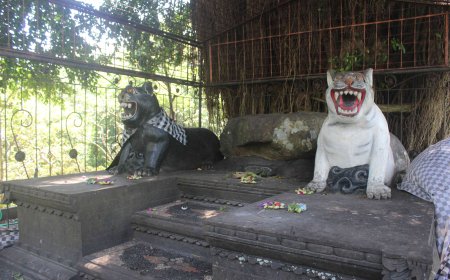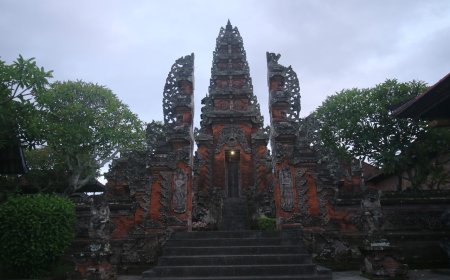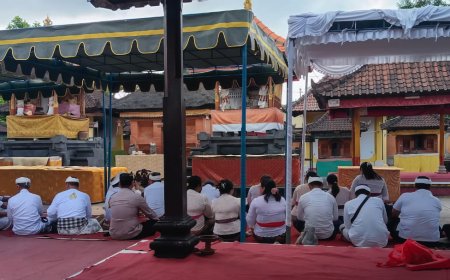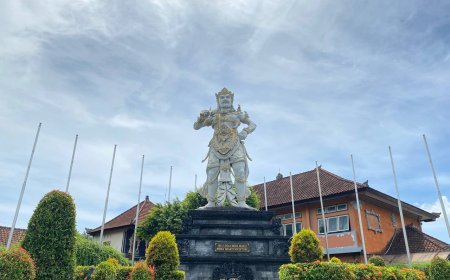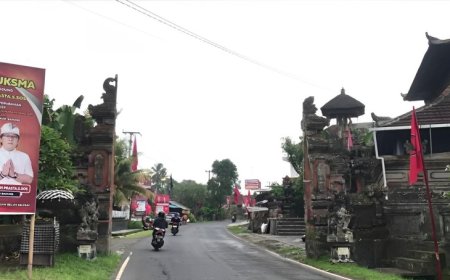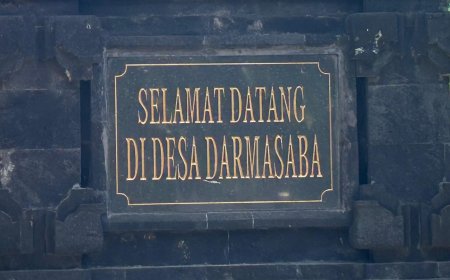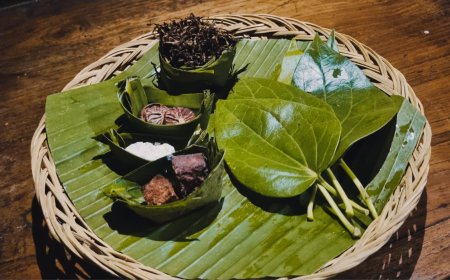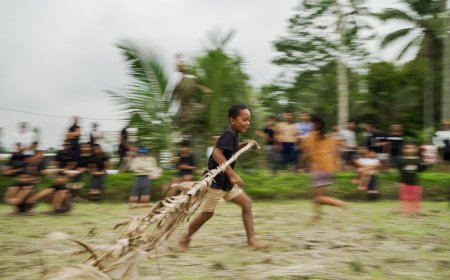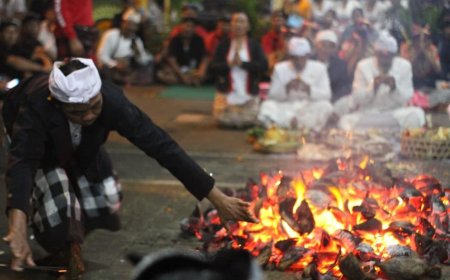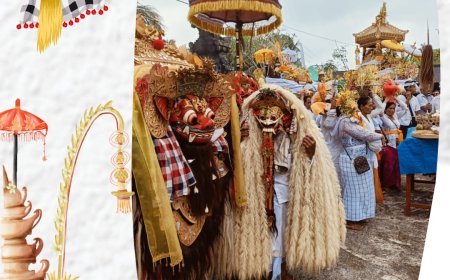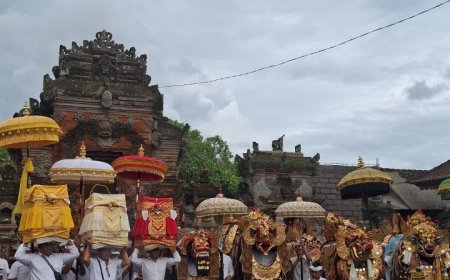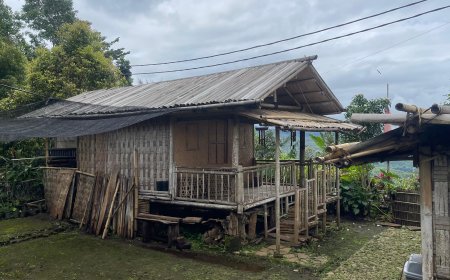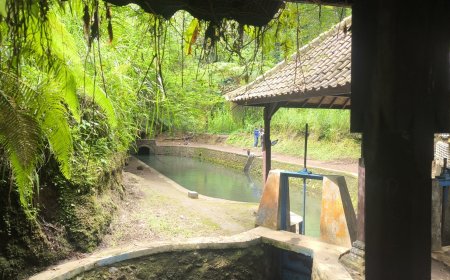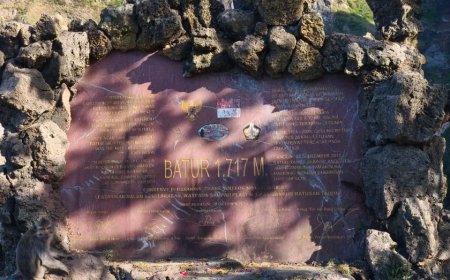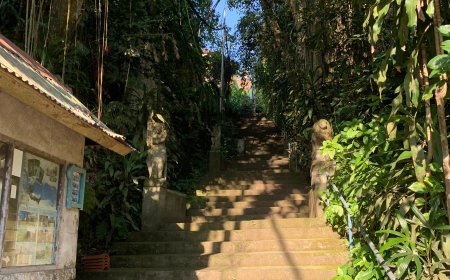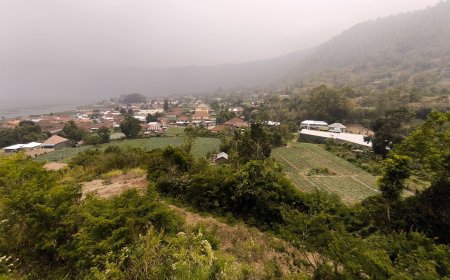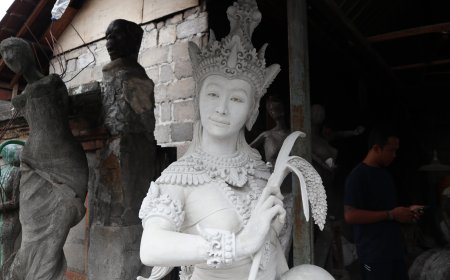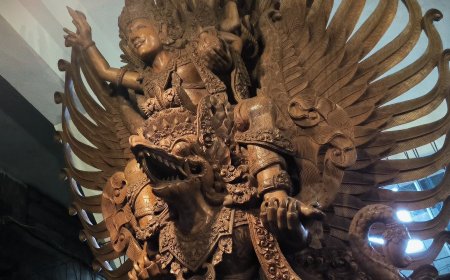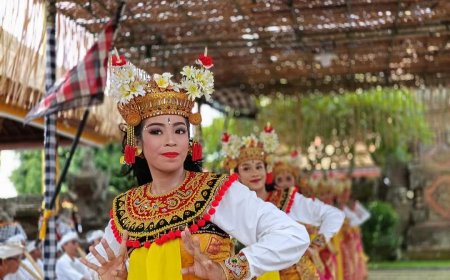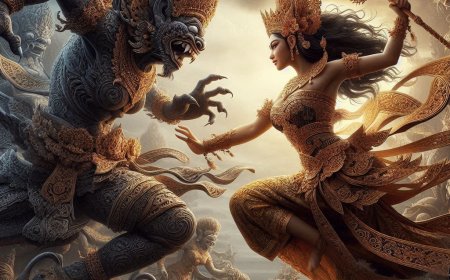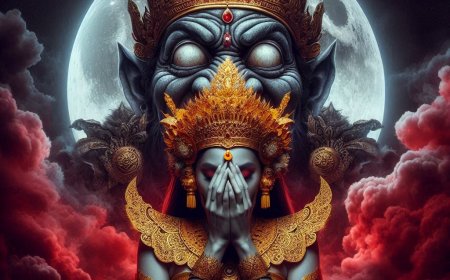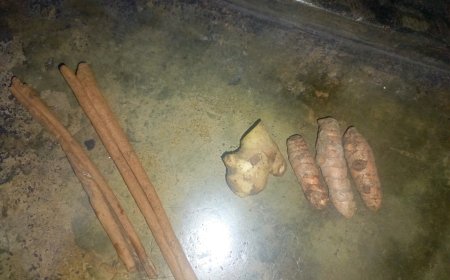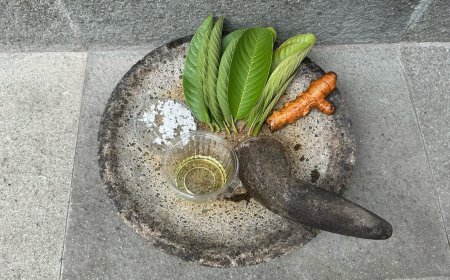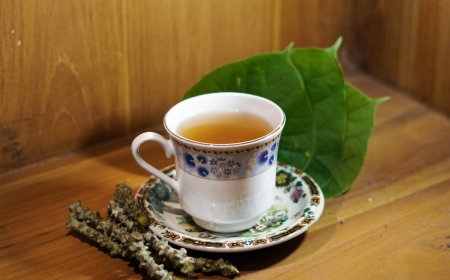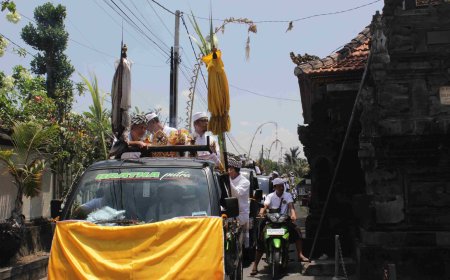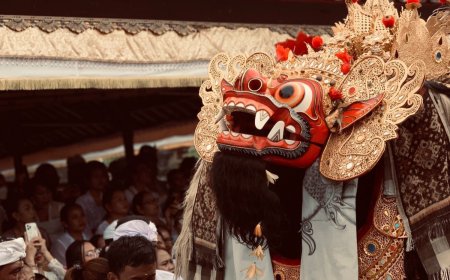Dehe: The Charm of Rejang Jepun Dance in Asak Village
The Rejang Jepun dance, an ancestral heritage passed down through generations, captivates with its spiritual beauty and unique adornment of authentic Frangipani flowers. Presented by the Dehe, the dance reflects the cultural richness and spirituality of the local community. The beautiful arrangement of Frangipani flowers not only reflect spirituality but also serve as an attraction for tourists and photographers.
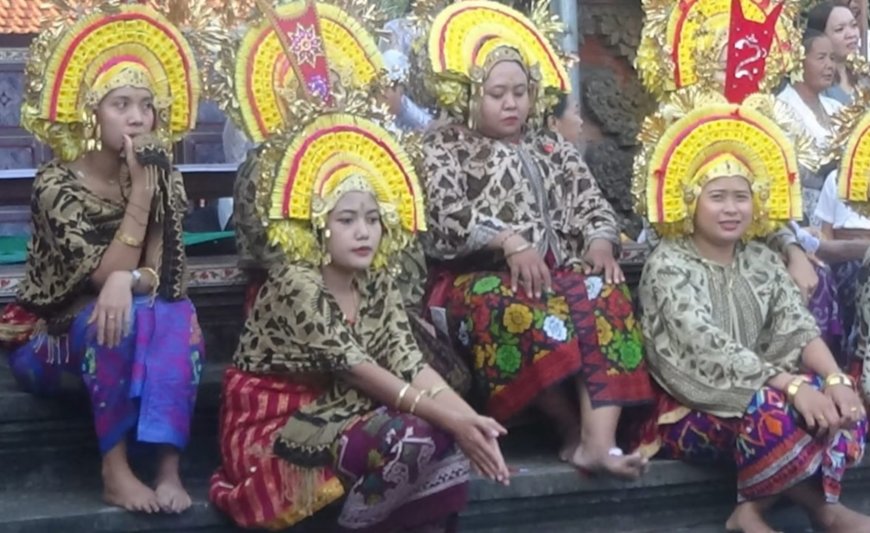
Asak Village is a village in Karangasem Regency, Bali. One of several villages classified as Bali Aga, the residents are still strong in maintaining cultural and religious rituals. One of the rituals that is still routinely carried out in Asak Village is the Rejang Jepun Dance.
The Rejang Jepun dance, an ancestral heritage, is captivating with a history not recorded in literature. Formed without a definite date, this dance is a spiritual beauty with unique real frangipani flower decorations that require special skills and art.
Quoting local community leaders, this dance can only be participated in after undergoing the "turun medehe" ceremony for those aged 15 years and over, which local residents call "ngepikang." The spiritual meaning of this dance shines through when it is performed at ceremonies, especially the at “Manis Kuningan” . The process of “Pelelawangan da”, circling the village with frangipani flower make-up, has become a ritual that unites the villagers at Puseh Temple.
Asak Village's Bale Agung (Source: Author's Collection)
In the context of the head adornment for the "payas perong" in the Rejang Asak dance, the elements of the head attribute serve as the pinnacle of beauty and symbolize nobility and grace. One such element is the "bunga tegeh," which exudes elegance through its towering square-shaped form. The golden yellow color of the "bunga tegeh" not only creates an impression of joy but also symbolizes glory in every dance movement. Geometric ornaments around it add a touch of dignity to the overall appearance.
Meanwhile, the "bunga anjel", crafted from pure gold metal and resembling an orchid, is proportionally placed on the right side with a diminishing upward shape. The golden color of the "bunga anjel" not only reflects grandeur but also imparts a sense of cheerfulness to the dancer.
Additionally, the "golden sandat" flower is more than just a visual element; it engages the sense of smell. The aroma emanating from the crown of the Rejang Asak signifies tranquility and enthusiasm in every dance step. The golden color of the "golden sandat" flower adds a touch of grandeur and festivity, creating a profound and meaningful sensory experience in every Rejang Asak performance. Thus, these head attributes serve not only as physical adornments but also as a means to convey deep meanings in the context of cultural and performing arts.
The head adornment in the Rejang Asak dance utilizes frangipani flowers with two main techniques: "Frangipani flower buds" and "twisted frangipani flowers." In the "Frangipani flower buds" technique, budding flowers are pierced onto "plendo", forming a crown. "twisted frangipani flowers." involves folding the tips of jepun flowers backward, creating a square shape by eliminating one petal to adjust the form. The yellow color of the kamboja flower adds luxury, and the use of fresh flowers provides a fresh appearance and a fragrant scent, enhancing the spirit of the dance.
Plendo, painted in white and red, serves as a divider between the belit and petitis flowers. The red color on plendo generates strong energy in the dance. The "twisted frangipani flowers." technique includes folding the tips of the flowers backward, forming a symmetrical square.
The golden head ornament is called "Blengker." "Blengker" is an ornament that follows the contours of the face of the Rejang Asak dancer, providing a more beautiful and proportional facial appearance. The golden "Blengker" is arranged in a circular shape around the dancer's forehead, also known as "petitis," formed to complement the facial features. The gold color symbolizes luxury in the dancer's crown.
The importance of this requirement is reflected in its use in “Kuningan Ceremony” and sixth odalan. Children who are old enough are required to “turun medehe” and become “dehe”. Apart from that, there is also what is called “dehe truna”, who also has to undergo the "turun matruna" ceremony which is determined to validate being a “dehe truna” and is allowed to take part in this Rejang Jepun dance. In rahinan musaba kasa, the dance uses gold frangipani flower decorations. In “Kuningan Ceremony”, tradisional percussion called “tabuh” uses a “tabuh Gambang” instead of a Gong.
This dance can only be performed/danced by unmarried female villagers. Each family in Asak Village can only present one daughter to represent them at the Pelelawangan event. However, families are not required to participate if there are no children who can appear.
The Rejang Jepun dance is not only an artistic performance, but also a reflection of the rich culture and spirituality of its people which has grown over time, continuing to attract tourists and photographers with every performance.

